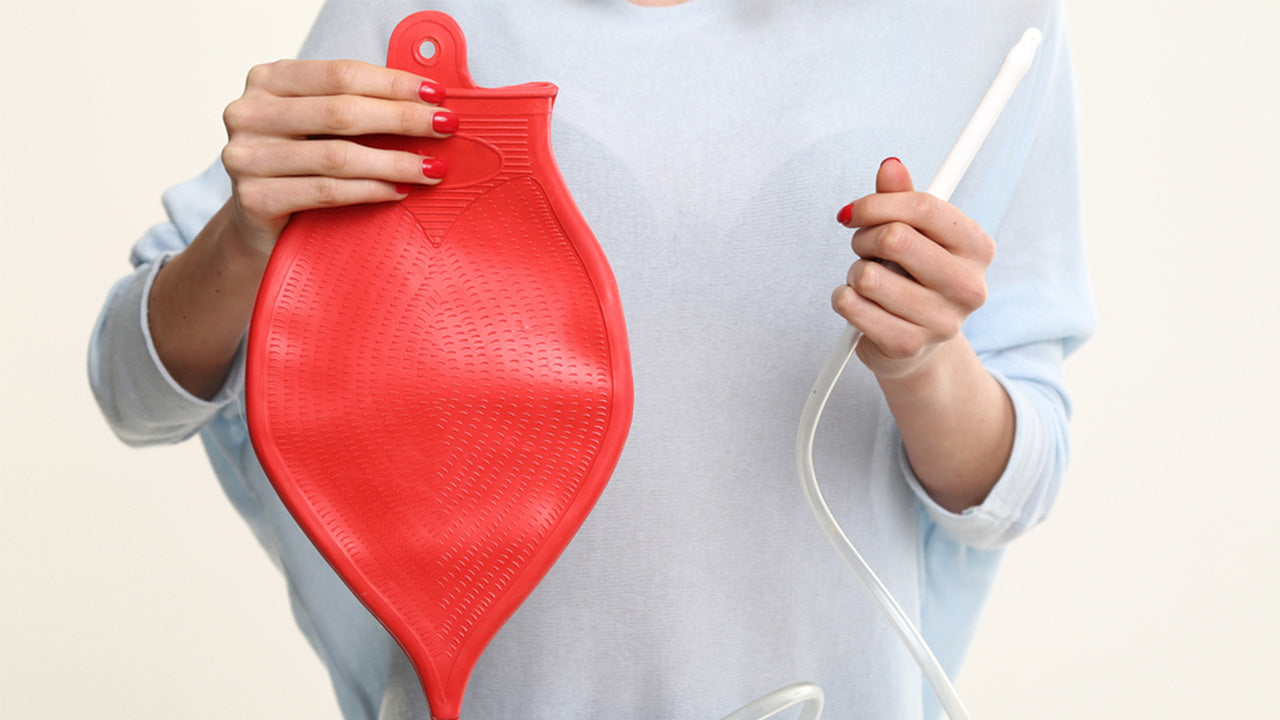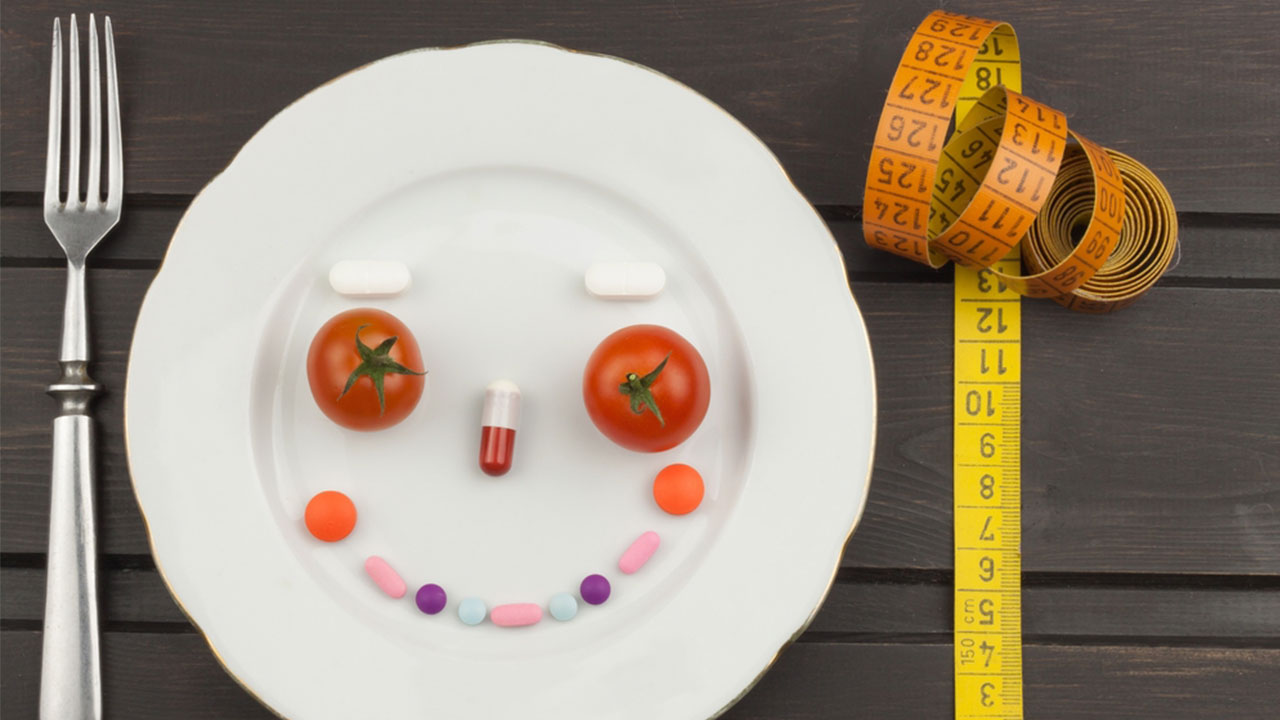Do Coffee Enemas Help with Weight Loss?
 By: by Amino Science
By: by Amino Science

There is lots of chatter in natural health and wellness groups supporting coffee enemas for weight loss. Well, sadly, while coffee enemas do have their benefits, weight loss isn’t one of them. Yes, you may see an immediate difference registered on your scale, but this is likely just a short-term effect.
Frankly, it is simply impossible to lose unwanted fat by doing 1 enema, or 10.
So—why is everyone talking about coffee enemas? Because enemas can flush fungi, bacteria, heavy metals, and solidified waste from your body. And, as we know, the gut, the brain, and the immune system are all connected, so a colon without unfriendly bacteria may improve your overall health.
A Brief Introduction to the Coffee Enema
Coffee enemas are relatively new to the at-home enema scene. And it is believed that coffee enemas may aid in detoxification because of the caffeine. Caffeine is a stimulant that can trigger specific physical and chemical reactions in the body, including the opening of bile ducts and the production of the glutathione.
Coffee enemas may be worth trying if you feel that your immune system needs a boost or if you want to break through brain fog you haven’t been able to shake. However, coffee enemas aren’t for everyone. The caffeine is absorbed into your system during a coffee enema, so if you have uncontrolled high blood pressure or have been told to avoid caffeine, this enema is not for you.
Don’t be disappointed; you don’t have to get too fancy with enema recipes. Even plain, purified water can help relieve constipation symptoms and loosen harden stool in your colon. Conventional enema solutions can be purchased at any pharmacy. They are generally pre-mixed saline solutions explicitly formulated to help relieve constipation.
But today, along with coffee enemas, other natural enema solution recipes are popping up online, each with their own purported health benefits. Certain natural health practitioners claim that an herbal enema, like a chamomile enema, can relax the colon, but there is no recorded clinical evidence of this.
Other DIY natural enema solutions growing in popularity in some wellness circles include Epsom salt enemas for more thorough cleanings, probiotic enemas for immune system health and gut inflammation, lemon juice enemas to balance pH, milk and molasses enemas (exhibit caution—milk and molasses can cause “explosive” results), and even garlic enemas for parasites or yeast.
Just remember, whichever enema recipe you choose, you are putting something into your body to be absorbed and processed. The risk of infection, electrolyte imbalance, and dehydration should be taken into account before you do any type of enema.
How Coffee Enemas Work
Conventional medicine doesn’t really embrace coffee enemas. There is very little medical research that shows its benefits. But, there is also very little research to show that it causes harm.
The premise of a coffee enema probably originated with Gerson Therapy, a controversial cancer treatment formulated by Dr. Max Gerson in the early 1920s. One of Gerson Therapy’s key tenants is the use of a coffee enema up to five times a day for certain cancer patients. Of course, this is an extreme idea and should only be done under the guidance of your medical team or natural wellness practitioner. A high number of enemas done in one day will likely adversely affect essential electrolytes including potassium, sodium, magnesium, and calcium.
Today, the Gerson Institute maintains that their therapy protocols, which include juicing, plant-based meals, enemas, and supplements, can help with certain types of diseases including several types of cancer, diabetes, cardiovascular disease, arthritis, and autoimmune disorders.
Gerson Therapy believes that a coffee enema while being held in the intestines helps to filter the body’s entire blood supply several times. They believe that coffee enemas help to filter out free radicals, heavy metals, ammonia-like products, and other toxins.
According to Gerson practitioners, during an enema the coffee is absorbed by the liver, causing the bile ducts to open and allowing more significant release of pent-up bile. This stimulates the liver to more effectively filter blood and flush the toxic bile from the body. However, this chemical and physical reaction has not been proven through medical research.
Just from a biological perspective, when caffeine enters via an enema, it may cause the muscles in the colon to contract, and then release. If you are constipated, the caffeine in a coffee enema may help to move things along.
3 Health Benefits of Coffee Enemas
Let’s look at three coffee enema benefits, backed by science.
1. Improves Detoxification
Coffee is an amazing substance, and research shows that coffee drinkers are less likely to have dementia, Parkinson’s disease, type 2 diabetes, strokes, and certain types of cancers. For individuals who prefer to have their coffee via an enema, coffee’s caffeine, potassium, and magnesium content are readily absorbed. These essential elements can help improve the release of toxins in the body.
Dr. Gerson believed that the caffeine in coffee triggered a physical response that was similar to dialysis. And while the dialysis response has not been verified, brewed coffee has an astringent-like power that can fight mucous and other substances. As the colon is a mucous membrane that is often compacted with waste, a coffee enema may help the waste to let go from the walls. This would then, theoretically, allow the astringent qualities of brewed coffee to aid in the turnover of cells on the colon walls.
2. Relieves Constipation
Constipation is one of the biggest complaints that cause individuals to do at-home enemas. And, as mentioned above, coffee’s natural caffeine content actually causes the muscles in the colon to contract and release. This may help you overcome a bout of stubborn constipation.
There is some evidence, too, that coffee’s astringent characteristics may help to clean out the little pockets in the colon called diverticula. And, research supports the use of therapeutic barium enemas in the treatment of bleeding diverticula. However, it must be noted that coffee was not used as the enema solution in this clinical trial.
3. Increases Antioxidant Activity
There is some evidence that a coffee enema may encourage the liver to produce glutathione. Glutathione, or GSH, is a tripeptide that is naturally created and housed in most of the cells of the human body. According to a report in Integrative Medicine: A Clinician’s Journal, glutathione plays a variety of essential roles, including supporting antioxidant enzymes, regenerating vitamins C and E, transporting toxins from cells and brains, and neutralizing free radicals produced during phase I liver metabolism.
Glutathione supplements are available. However, if you want to increase antioxidant levels and support detoxification of toxins, it may be worth trying a coffee enema to stimulate your body to make and release glutathione.

How to Do a Coffee Enema
Enema kits are readily available at drug stores and superstores. A complete kit will contain a bottle, an enema pipe, tubing, a shut-off clamp, a hang tab, and a hook. The hang tab and the hook are used to allow gravity to assist in the coffee enema’s journey.
Don’t skimp on this purchase; both reusable and disposable enema kits are available. If you are going to make coffee enemas a regular practice, a high-quality reusable kit may be the best choice. Remember to clean all of the elements of the kit thoroughly after each use.
Next up is choosing the right coffee for your enema. It is incredibly important to select organic coffee beans, as the coffee is absorbed into the body without the benefit of stomach acids. You want as pure and clean of a coffee bean as you can find. If you have a grinder with the ability to grind coffee super fine, that is perfect. If not, purchase pre-ground coffee from a reputable source.
The best time of the day to do a coffee enema is immediately after a bowel movement. This makes the process more comfortable, and it allows you to retain the coffee for a more extended period of time. If you are doing an enema because you are constipated, that is fine too, just accept that you may be prone to more cramping and discomfort.
Once you have gathered all of the required materials and carved out time when you won’t be interrupted, here are the steps to follow for your enema:
- Stage your bathroom. Make your bathroom comfortable by using a pillow or two and a blanket. It is generally best to remain in the bathroom for the duration of an enema. You want to make the bathroom as relaxing and soothing as possible. Perhaps add your favorite music and diffuse relaxing essential oils.
- Prepare the enema solution. Follow the directions for the coffee enema recipe. To gain the most benefit from the coffee enema, allow it to steep as directed. Straining is incredibly crucial, as any particulates can clog the tubes and connections. Do not use cheesecloth or coffee filters, as they can release unwanted particles into the coffee. Allow the brewed coffee to come to body temperature before using.
- Locate the valve. Make sure the lever on the nozzle is shut, and then carefully pour the coffee enema solution into the enema kit’s bag. Secure the bag on the hook a minimum of 3 feet above where you’ll be lying to ensure gravity will work in your favor to help deliver the coffee enema.
- Use a natural lubricant. Coconut oil is an excellent natural lubricant to use on the enema nozzle. Lay down on your right side if you are right-handed, or on your left side if you are left-handed. Then, move into a tucked fetal position and insert the nozzle into your rectum. It should be about 1 inch inside.
- Open the valve. Release the coffee by opening the valve on the enema kit. Remain still, and continue to breathe until all of the liquid (or as much as you can hold) is inside. Focus on retaining the coffee enema as long as possible. This will likely require you to tense certain muscles. Just be sure to continue to breathe. You can remove the nozzle at this point if you are comfortable holding the liquid in without the nozzle in place. If you are able, you can lie on your back, and gently massage your lower abdomen. Relax and breathe through any cramping or discomfort.
- Relieve yourself. Try to keep the coffee solution inside for 10 to 15 minutes. When the urge to relieve yourself occurs, move to the toilet to release your colon’s built-up waste.
- Listen to your body. After relieving yourself, you may want to take a long shower, or you may just want to take a short nap. Listen to your body, especially if this is the first time you’ve done a coffee enema.
- Rehydrate. Drink a large glass of fresh water, or better yet, a large glass of coconut water. There is a risk of dehydration and electrolyte imbalance in doing any enema, and rehydrating and rebalancing key electrolytes like potassium is essential.
- Take a probiotic. Take a high-quality probiotic supplement a couple of hours after completing your coffee enema to restore the healthy bacteria in your digestive tract. Continue to take the probiotic supplement and eat plenty of probiotic-rich foods in the days following your coffee enema.
Coffee Enema Precautions
Enemas, including coffee enemas, are not without risk. While they are generally considered safe, if you have any of the following underlying conditions, speak to your doctor before doing any type of enema or colon hydrotherapy treatment.
- Crohn’s disease
- Diverticulitis
- Heart disease
- Hemorrhoids
- Irritable bowel syndrome or irritable bowel disease
- Kidney disease
- Recent surgery on the bowel
- Tumors in the colon or rectum
- Ulcerative colitis
If you are sensitive to caffeine or have high blood pressure, a coffee enema may not be advised. According to a clinical study published in the journal International Scholarly Research Notices, researchers have found that caffeine is absorbed through coffee enemas, although less is absorbed than if you drink your coffee.
As enemas flush out the harmful bacteria, waste, and even friendly bacteria from your colon, it is crucial that you take a high-quality probiotic supplement. This is to ensure that your digestive tract is repopulated with the friendly bacteria that are responsible for gut health and a healthy immune system.
Side effects of enemas and the side effects of coffee enemas are similar, and while generally mild, some serious complications may occur:
- Bowel or rectal perforation
- Cramps
- Death
- Dehydration
- Dizziness
- Electrolyte imbalance
- Infection
- Kidney failure
- Nausea
- Poor absorption of certain medications
- Septicemia
- Vomiting
Before you go the uncomfortable route of a coffee enema, consider trying an essential amino acid supplement to support overall health. Bonus? These supplements also help promote weight loss!

Up to 25% off Amino
Shop NowTAGS: tips
Join the Community
Comments (0)
Most Craveable Recipes




 833-264-6620
833-264-6620



















